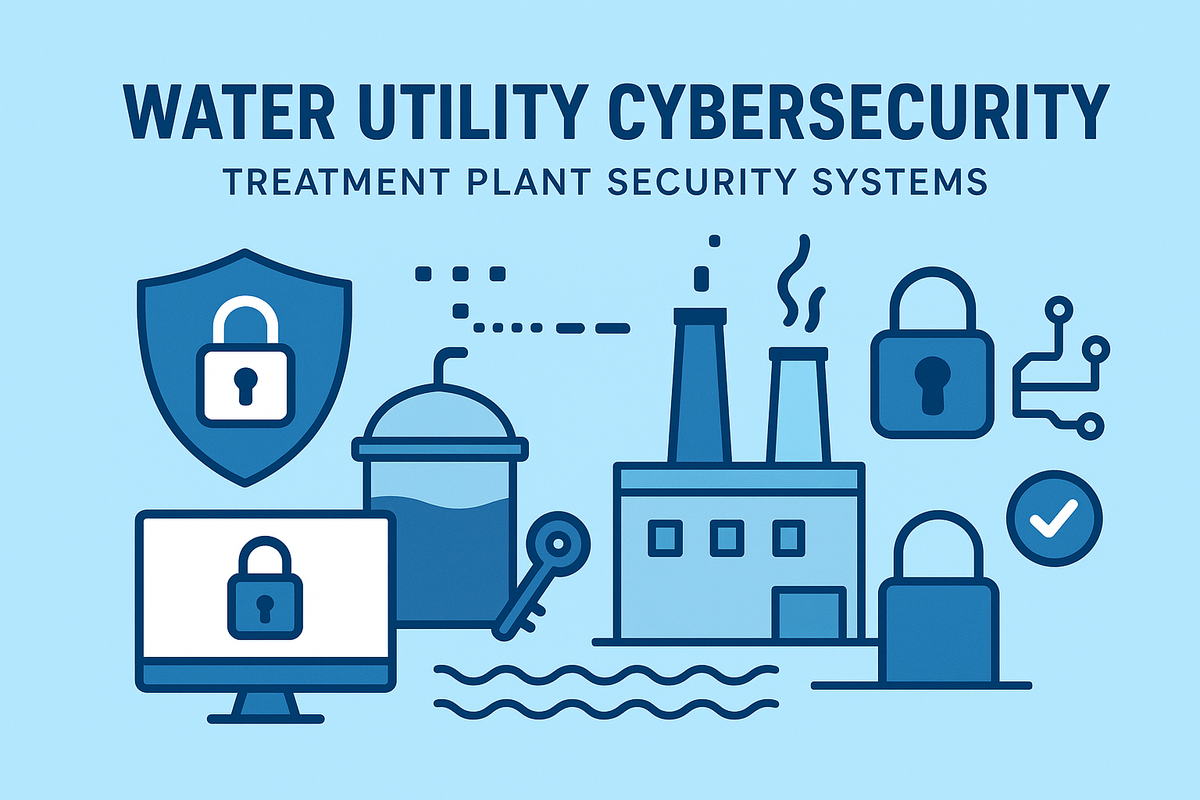Water Utility Cybersecurity: Treatment Plant Security Systems

Introduction: Essential Nature and Risks of Water Utilities
Water treatment plants are fundamental to public health, safety, and economic stability, but their increasing digitalization and interconnection have exposed them to unprecedented cyber risks. Disruptions in water supply—even for a day—can jeopardize tens of billions in economic activity and pose a direct threat to communities.
Modern Threat Landscape for Water Sector
- Water utilities are frequent targets for ransomware, malware, phishing, and advanced persistent threats by both nation-state and cybercriminal actors.
- Underinvestment, legacy infrastructure, and the move from isolated OT to integrated IT+OT systems have created a wider attack surface.
- Documented incidents have included network shutdowns, chemical dosing tampering, data theft, exposed billing platforms, and operational hijackings.
- Successful attacks have occurred in the US, UK, EU, and beyond—highlighting water as a global target for both financial and geopolitical reasons.
Critical Vulnerabilities and Attack Techniques
- Most water plants still run outdated industrial controls (SCADA, PLCs) lacking modern security, with many assets exposed directly to the Internet or protected only by default credentials.
- Flat network architectures with weak segmentation let attackers move easily from breached IT to OT systems.
- IoT-driven monitoring and remote sensors increase attack vectors—if compromised, they can manipulate treatment processes or mask dangerous water quality changes.
- Ransomware groups exploit the urgency of water delivery, extorting millions by threatening supply or customer safety.
- Orchestrated attacks have involved the use of drones for surveillance and physical entry coordination.
Major Case Studies and Incidents
- American Water’s forced shutdown of key digital services in 2024 highlighted billing and OT interconnection risks—even when water quality wasn’t directly impacted.
- In one chilling case, attackers remotely altered chemical doses in a treatment plant, potentially endangering thousands before human intervention stopped it.
- In 2025, European and US utilities saw partial or near-complete service interruptions, with millions in losses from data breaches and ransom payouts.
- Drones have been used to scout sites for physical intrusion and facilitate cyber-physical theft, marking a new blended threat vector.
Regulatory Environment and Standards
- National and international regulation has increased: EPA, CISA, and the EU’s NIS2 all require safeguards for both IT and OT, vulnerability reporting, regular audits, and operational segmentation.
- More than 300 US water systems are currently classified as “critical risk” by federal authorities due to identified cybersecurity weaknesses.
- Compliance mandates now include access control, secure remote management, encrypted communication, and continuous monitoring of treatment plant technologies.
Best Practices: Building Secure Water Treatment Systems
- Segment IT and OT Networks: Microsegmentation and robust firewalls between business and operations sides prevent easy lateral movement by attackers.
- Harden Endpoints and Disable Defaults: Eliminate default passwords, update software legacy assets, and restrict direct internet exposure for treatment and SCADA controls.
- Continuous Monitoring and Incident Response: Deploy SCADA-aware SIEM and real-time anomaly detection; run tabletop and live cyberattack simulations to test readiness.
- Supply Chain and Third-Party Security: Require cyber standards in contracts and vet all vendors with network or remote access.
- Invest in People and Procedures: Regularly train plant staff, conduct social engineering awareness, and develop clearly documented incident and recovery plans.
- Prepare for Blended Threats: Address physical-cyber convergence, such as drones, through video monitoring and rapid incident notification protocols.
The Path Forward: Resilience and Sector Collaboration
- Resilience requires more than technology—sector-wide coordination, threat intelligence sharing, and public-private partnerships are vital to anticipate and mitigate evolving risks.
- The future of water security will rely on modernizing legacy systems, scaling workforce skills, and maintaining a “never trust, always verify” cybersecurity posture at all operational levels.
Conclusion: Protecting Water in a Connected World
The safe operation of water treatment plants is central to modern life. Cyber disruptions are a daily risk and demand constant vigilance, system updates, comprehensive staff training, and regulatory compliance. Plant operators and government agencies must work together, recognizing that water system cybersecurity is not just an IT issue—it is public health and national security.
Take the Next Step with CodeSecure Solutions
Cyber threats are growing more sophisticated every day. With a trusted partner by your side, you can safeguard your business while focusing on what truly matters—growth and innovation.
At CodeSecure Solutions, we deliver comprehensive cybersecurity services in Chennai, uniquely tailored for startups, SMEs, and enterprises:
- Vulnerability Assessment & Penetration Testing (VAPT)
- Network Security Solutions
- Compliance Support (ISO 27001, PCI-DSS, HIPAA, DPDP Act, GDPR)
- Cloud & Endpoint Protection
- Security Awareness Training
No matter your industry or size, CodeSecure customizes solutions to fit your needs—ensuring your data, reputation, and operations remain secure.
Ready to Strengthen Your Defenses?
- 📞 Call: +91 73584 63582
- ✉️ Email: [email protected]
- 🌐 Visit: www.codesecure.in
Stay secure. Stay informed. Choose CodeSecure Solutions—your partner in cyber resilience
